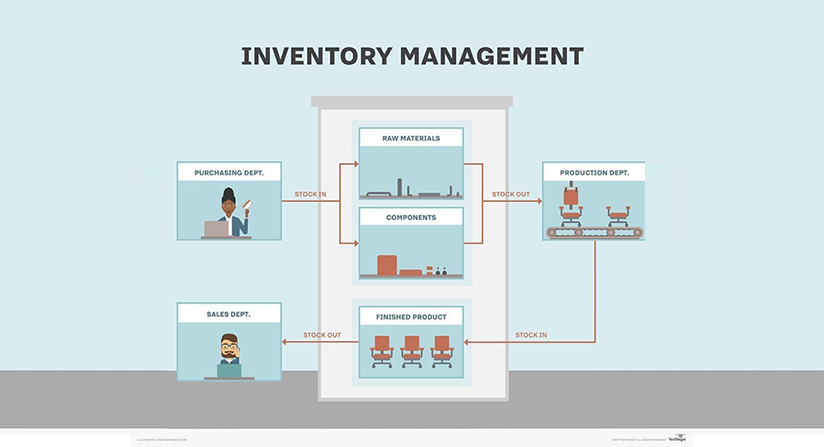The primary goal of lean manufacturing is to eliminate waste, (anything that doesn’t add value from a customer perspective), and inventory falls within that scope. So essentially lean inventory management best practices are focused on reducing inventory levels to zero. A worthy goal, but impractical to say the least.
However, lean warehouse management techniques present a tremendous opportunity to significantly increase production efficiencies and deliver better quality products at a lower cost. And these principles can be applied equally well to the smaller manufacturing enterprise as they can be to the large.
Inventory Is Waste
The lean manufacturing philosophy identifies seven wastes, of which inventory is one of those. Inventory either adds value (VA) or doesn’t add value (NVA). It adds value when it’s on the move through the production process from receiving to outbound distribution as a finished good. If at any time it stops, for example as a result of a quality rejection causing a production line disruption, then inventory just sits motionless. At this point, it is NVA and becomes a cost burden.
So the objective of deploying lean manufacturing management software is to ensure that your inventory keeps moving! Below are four lean inventory management best practices that help to keep inventory at optimal levels.
1 – Maintain Accurate Inventory Records
Establishing real-time inventory visibility and accuracy requires a computer-based system such as ERP software. In addition, using barcode scanners has been proven to significantly reduce errors prevalent with manual techniques. This kind of system enables a much more granular and timely approach to inventory tracking.
Whereas before, tracking and reporting purchase receipts, movement of raw materials to production, finished goods from production to stock, and finished goods to the customer, would have been sufficient. But now, a manufacturing inventory management ERP software in combination with barcode scanning can accurately track inventory promptly at many more points in the journey from supplier to customer. For example, inventory at receiving, on the move, at specific locations, at appropriate points on the production line, at inspection points, and in shipping can all be tracked for greater visibility and accuracy. Errors and delays can also be identified much faster.
2 – Make Partners of Your Suppliers
Purchasing will always be looking for the best deals from suppliers. Sometimes this leads to overstock situations because the purchasing department has secured quantity discounts, which has the additional benefit of lower freight costs (fewer shipments).
Certainly, your suppliers want to sell you as much as they possibly can in one order however they value stability, regular guaranteed orders, and long-term relationships more. The key is to collaborate with the supplier and share your production schedule to receive regular smaller shipments and shorter lead times. If the supplier benefits profitably from this arrangement they will become a partner.
3 – Keep a Safety Stock
A safety stock serves as a buffer between you and your suppliers and between you and any unexpected production glitches or disruptions. Many factors can cause the need to pull inventory from the safety stock, late delivery from a supplier, inventory errors, higher-than-expected rejection rates, or higher usage.
The key is to ensure the safety stock is maintained at the right level. This can be done with a historical analysis of stock-out situations. How many times did stock-outs occur and how much safety stock was used each time? Keep in mind that safety stock is required for basic raw materials, work in process, and finished goods.
4 – Implement a Cycle Counting Program
An aggressive cycle counting program is essential to improve inventory management in a manufacturing company along with inventory record accuracy. An ERP system can maintain accurate records, but it is dependent on its input which is why cycle counting is the perfect complement. Inventory optimization techniques must focus on identifying and eliminating any source of error as quickly as possible.
If you haven’t implemented best practices already, a comprehensive audit of your manufacturing processes will reveal numerous opportunities to better manage your inventory flow. Applying these best practices will enable inventory reduction over time, shortened production cycles, and much less waste. They will also help to increase customer service levels, efficiency, and profitability. There is no time like the present to start implementing them!
So how do you improve inventory management in your manufacturing business? If you want to learn more about Inventory Management Best Practices, watch our on-demand webinar on Implementing Inventory Management Best Practices.
Follow Us











